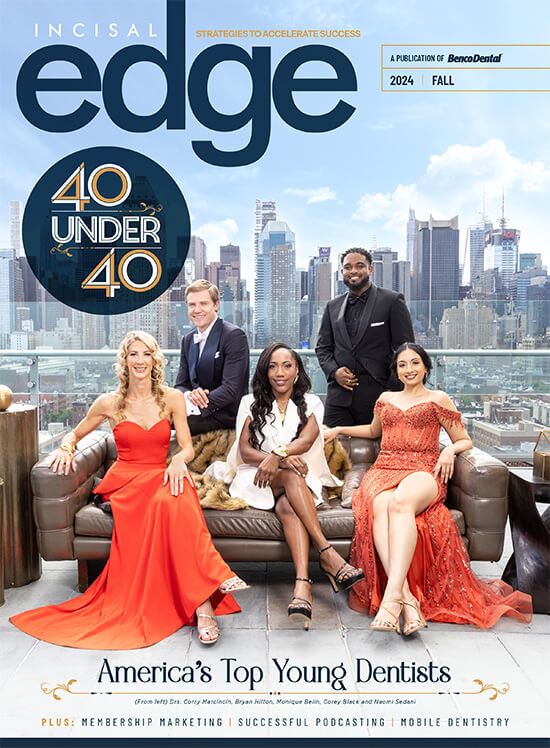Not everyone understands that branding is about much more than your practice’s name and logo. That spells opportunity for those willing to fully leverage the power of a strong, unique identity.
WHILE DENTISTS have embraced the idea of themselves and their practices as brands, there’s still some misunderstanding of what a brand really is, how to establish it and why it ultimately matters to patients—or doesn’t. How many practices can you think of that have pretty signage and beautiful interiors but that are otherwise entirely interchangeable? It’s a sea of sameness out there, which presents a significant amount of upside for practice owners who are willing to invest extra effort in standing apart.
Your brand is not a logo, color palette or tongue-in-cheek social media post. If that’s all you’re doing, it’s the branding equivalent of putting lipstick on a pig. Without a fundamentally sound brand architecture supporting it, consumers will see through the superficiality of your marketing ploys. Deciding who you are, what you stand for and which demographic you want to attract is key to establishing a brand that captivates and resonates.
A brand is a framework, anchored to a genuine mission, that helps dictate your position in the market. By definition, your brand makes claims about the quality of treatment you provide and the unique patient experience you strive to deliver. To gauge a brand’s truth, professional marketers look for what we call “proof points,” which serve as evidence that you’re walking the walk. Proof points can encompass education and certifications, professional memberships and awards, as well as patient testimonials and news coverage.
These days, however, that’s only the minimum. If you strive to be a great brand rather than just a good one, you need to go the extra mile. For the beauty retailer Lush, that meant shutting down its Facebook, Instagram, TikTok and Snapchat accounts until those platforms start doing a better job of prioritizing user well-being over pure engagement. Outdoor clothing brand Patagonia sat out last year’s Cyber Monday, promoting sustainability by encouraging customers to share and buy used items instead. Both moves likely cost the companies millions of dollars but stand as irrefutable proof points that they live the missions they espouse.
At Benco Dental, we recently refreshed our visual identity to more closely align with our mission to drive dentistry forward through innovation, with a strong emphasis on individual customer care and a supportive family work culture. Absent proof points, this would amount to nothing more than some new colors and graphic elements like arrows to symbolize forward momentum. However, our proof points back it up, including customer satisfaction scores that are higher than much-loved brands such as Apple and Zappos; innovation-sales figures revealing that our customers spend about one in four dollars on products introduced in just the last several years; and Best Places to Work trophies as well as strong diversity-and-inclusion efforts. All that architecture was firmly in place long before our visual refresh.
Renowned marketing expert and professor Jef I. Richards has said that “creative without strategy is called ‘art.’ Creative with strategy is called ‘advertising.’ ” For your brand to mean something, it has to have substance. That isn’t built overnight; it’s earned over years. If you live your brand every day, it can be meaningful even in its infancy. Otherwise, you risk being just another nice office with another nice logo
in a city full of them . . . when you could be so much more.
LANCE WAGNER is Benco Dental’s Director of Brand and Communications. Previously, he led brand and media strategy for Visionworks, a $1 billion vision-care organization. His media and digital strategy experience spans top national brands in retail and specialty health care including dental, vision and senior living.



